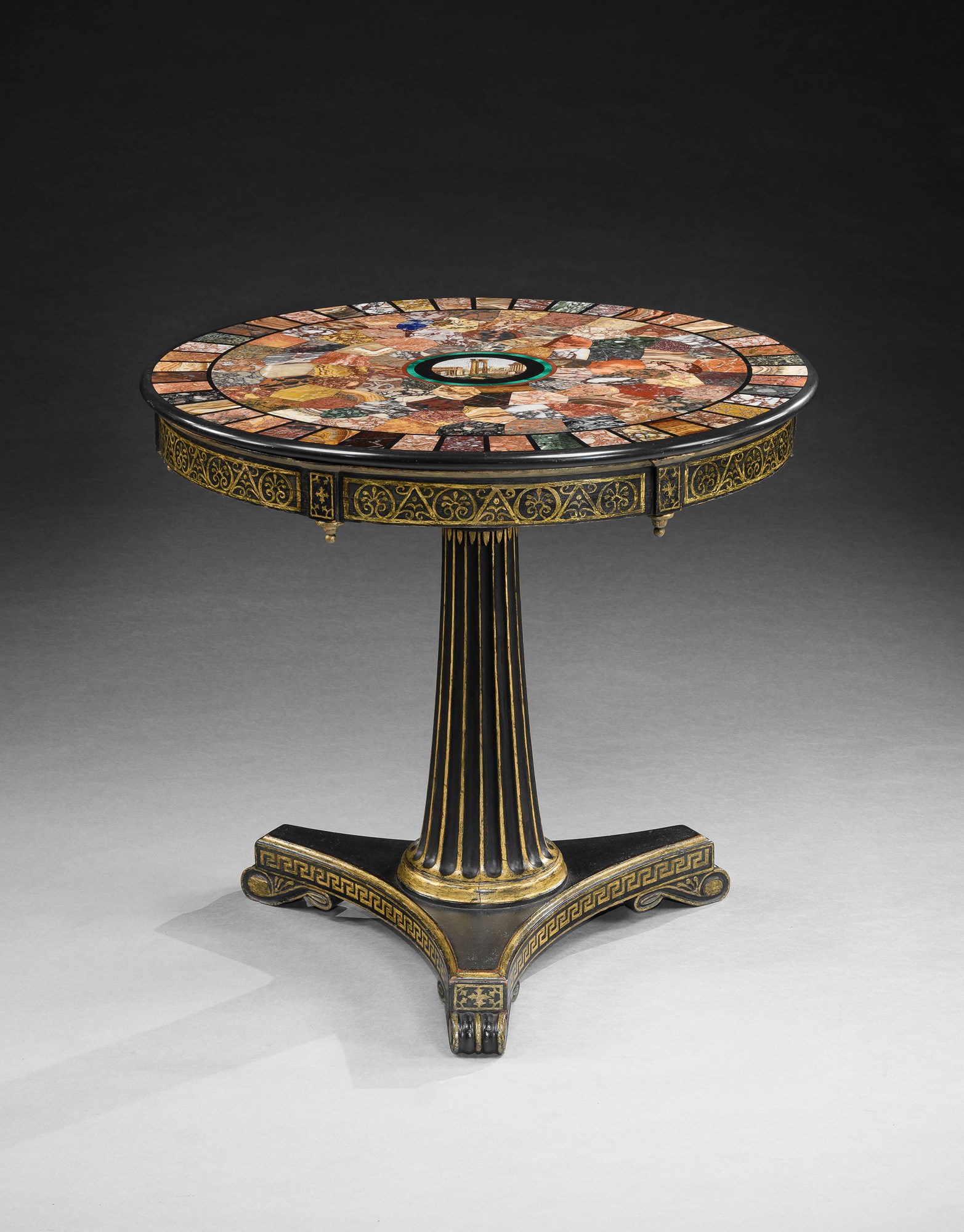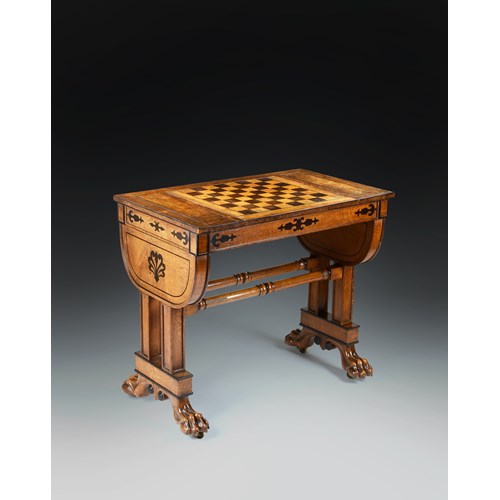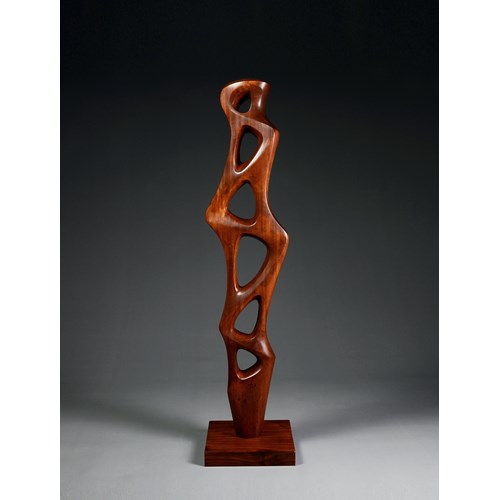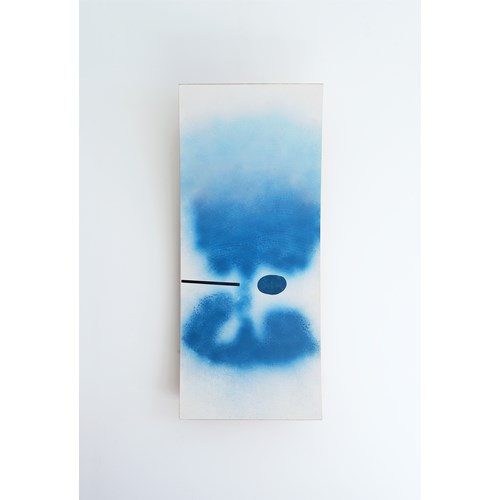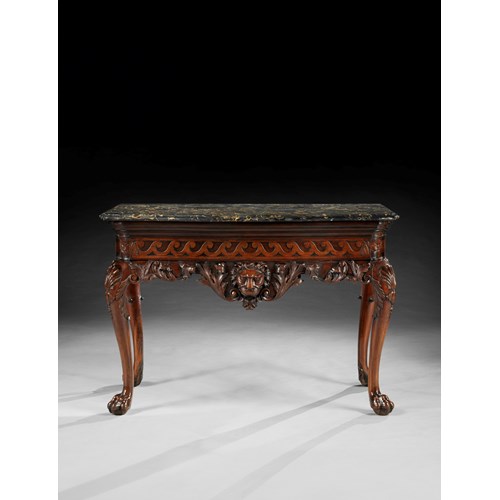Marketplace
A Regency Period Gilt and Ebonised Centre Table with a specimen marble and micro-mosaic top
A Regency Period Gilt and Ebonised Centre Table with a specimen marble and micro-mosaic top
Date English, circa 1820
Depicted within the micro-mosaic from left to right
Displayed on the left
The Arch of Septimius Severus at the northwestern end of the Roman Forum is a white marble triumphal arch dedicated in 203 AD to commemorate the Parthian victories of Emperor Septimius Severus and his two sons, Caracalla and Geta, in the two campaigns against the Parthians of 194-195 and 197–199.
After the death of Septimius Severus, his sons Caracalla and Geta were initially joint Emperors. Caracalla and Geta were assassinated in Rome, in the practice now known as damnatio memoriae. Geta’s memorials were destroyed and all images or mentions of him were removed from street buildings and monuments. As result, Geta’s image and inscriptions referring to him were removed from the arch.
Displayed in the centre
The Temple of Castor and Pollux is an ancient temple. It was originally built in gratitude for victory at the Battle of Lake Regillus (495 BC). Castor and Pollux (Greek Polydeuces) were the Dioscuri, the “twins” of Gemini, the twin sons of Zeus (Jupiter) and Leda. Their cult came to Rome from Greece via Magna Graecia and the Greek culture of Southern Italy.
Displayed on the right
The Temple of Jupiter Optimus Maximus. The Temple of Jupiter was the most important temple in Ancient Rome, located on the Capitoline Hill. It was surrounded by the Area Capitolina, a precinct where numerous shrines, altars, statues and victory trophies were displayed.
Displayed on the left
The Arch of Septimius Severus at the northwestern end of the Roman Forum is a white marble triumphal arch dedicated in 203 AD to commemorate the Parthian victories of Emperor Septimius Severus and his two sons, Caracalla and Geta, in the two campaigns against the Parthians of 194-195 and 197–199.
After the death of Septimius Severus, his sons Caracalla and Geta were initially joint Emperors. Caracalla and Geta were assassinated in Rome, in the practice now known as damnatio memoriae. Geta’s memorials were destroyed and all images or mentions of him were removed from street buildings and monuments. As result, Geta’s image and inscriptions referring to him were removed from the arch.
Displayed in the centre
The Temple of Castor and Pollux is an ancient temple. It was originally built in gratitude for victory at the Battle of Lake Regillus (495 BC). Castor and Pollux (Greek Polydeuces) were the Dioscuri, the “twins” of Gemini, the twin sons of Zeus (Jupiter) and Leda. Their cult came to Rome from Greece via Magna Graecia and the Greek culture of Southern Italy.
Displayed on the right
The Temple of Jupiter Optimus Maximus. The Temple of Jupiter was the most important temple in Ancient Rome, located on the Capitoline Hill. It was surrounded by the Area Capitolina, a precinct where numerous shrines, altars, statues and victory trophies were displayed.
Date: English, circa 1820
More artworks from the Gallery


